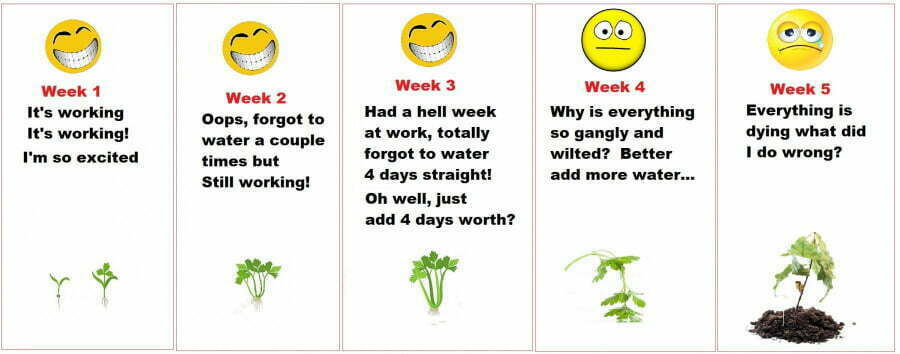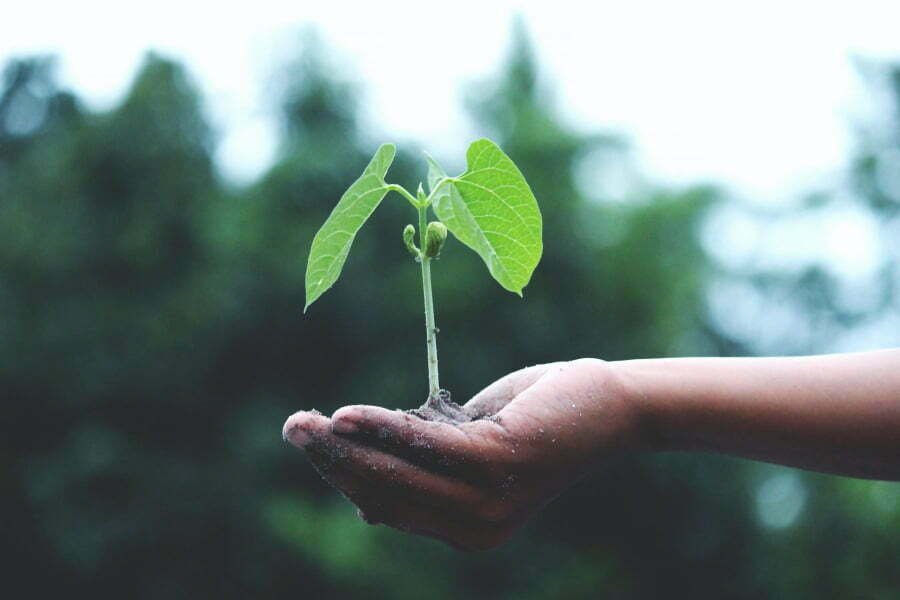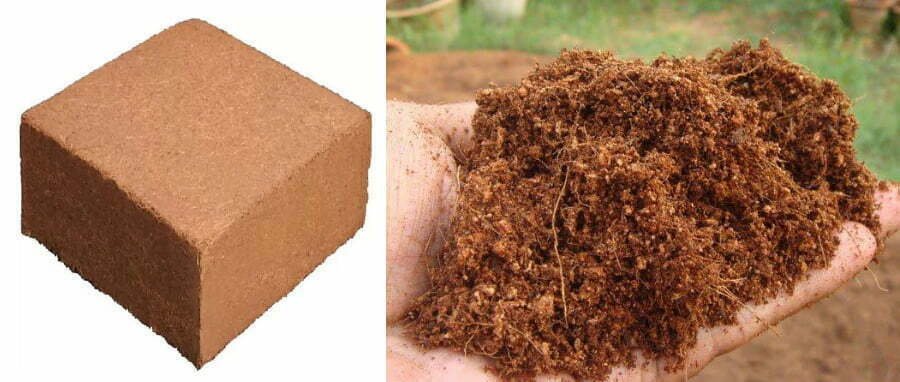The number one thing beginner gardeners get wrong
Story and images by Mr Stacky Vertical Gardens, October 2022
Can’t keep your plants alive? You’re not alone. Plenty of beginner gardeners give up before they’ve barely started. But don’t go just yet. If you are wondering why your pot plants keep dying on you, it’s because you’re using the wrong growing medium & watering technique.
So, here’s a scenario, you buy your lovely new plant, pot it in some nice compost soil and water it every day. Or perhaps you forget to water them and give them an extra dose when you do remember. But just as they start sprouting and looking great, they die off. What happened?

Your beautiful plants are looking rather droopy and wilted. Let’s give them some more water you say, maybe they are dehydrated in the Aussie sun. But oh no! Now they look even worse — what’s going on? Sound at all familiar?
You are not alone, this can be a common problem when trying your hand at gardening for the first time, and you are not alone. Plenty of first-time gardeners can relate to this experience when first starting out, but it is all part of the learning process.
Did you know that plants can actually get too much water? We all think that water is the best thing for them but actually overwatering can be just as bad as underwatering and these are two common mistakes beginner gardeners get wrong.
Not to worry though, when caught early, issues such as this can still be rectified! Below we will talk about what can go wrong and how you can fix it — don’t give up just yet!

Underwatering your plants
One of the most frequent mistakes first-time gardeners make is not giving plants enough water. With our busy lives, it is all too easy to forget to water your plants, or perhaps you are so worried about overwatering- you don’t give enough water!
Don’t fret though, if you catch issues early, you may just be able to save your plant. Here are some things to look for when your plant is not getting enough water:
- Soil is too dry. If the soil around your plant is very dry or has gone hard and crunchy, it has become dehydrated.
- Dry leaves. You may see wilted leaves that are dry and crispy.
- Brown edges. Leaves will turn brown, dry, and crispy when lacking water.
- Stunted growth. Plants will either not grow or will grow at a much slower rate.
- Yellow leaves. If your soil is dry and the lower leaves on the plant are turning yellow, it may need more water.
- Leaves lacking colour. Leaves may look dull or lack vibrancy. You want a nice juicy green colour!
- Stems are weak. Your plant may lack structure or not be able to hold itself up properly. Stems look as though they could easily break.
- Crumbling soil. The soil may start to separate from the outside of the pot.

Overwatering plants
Another mistake many beginners make is giving plants too much water. Plants can be starved of oxygen if they have too much water. This can lead to diseases such as root rot.
What to look for in overwatering:
- Drooping brown leaves. So leaves that are drooping, weak looking and turning brown are signs of overwatering.
- Yellow leaves. Leaves turning yellow, and new leaves yellowing and falling off.
- Stunted growth. A lack of growth or very slow.
- Root rot. Small, pale, and wilted leaves are signs of root rot.
- Soil turning green. Algae may turn soil green and smelly.
- Pests. They are attracted to wet environments.
- Blisters. Brown or white blisters on the underside of leaves.
How to fix under and overwatering for good
One way of ensuring you solve the under/over water equation is with a hydroponic system. For example, this Tower Garden from Mr Stacky is an example of a very simple set-up that anyone can use with success.
The secret is to combine perlite with coco coir at a ratio of approx 70/30. Coco is derived from the husk of the coconut and comes in compressed blocks that expand when water is added. This growing medium is exceptional. It’s very porous so even when it’s fully saturated it holds up to 22% oxygen at the root zone. This is essential for plant health and is truly the key to your success.

Coco coir is absorbent, porous (drains well) and dense so helps to regulate temperature and hydration variance. Coco/perlite is so versatile, you can use it in all kinds of different set-ups using solar, water main, or electric. This is one secret that beginner gardeners will be very thankful for. Combine coco/perlite this with the right sunlight and space to grow, and your plants will thrive every time.
Example: This Mr Stacky Tower Garden System used coco/perlite.


